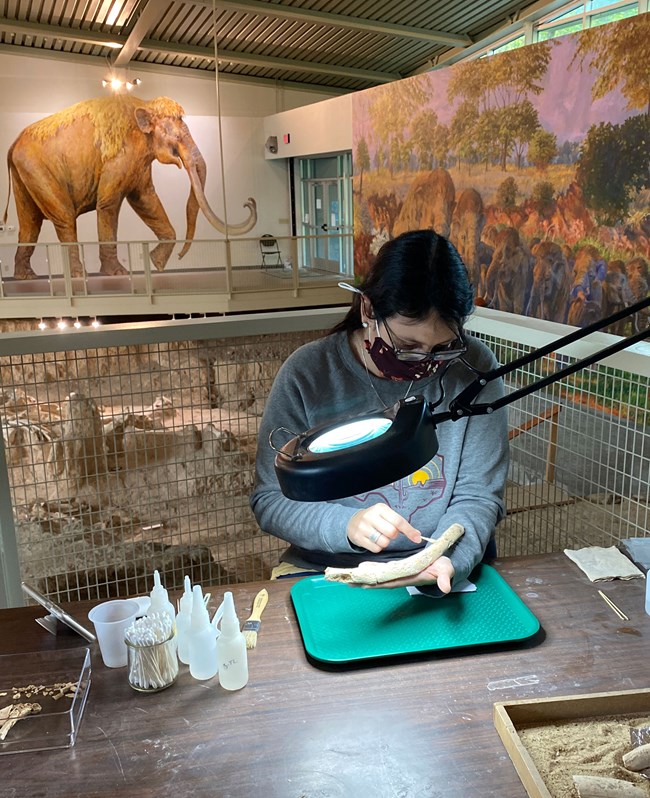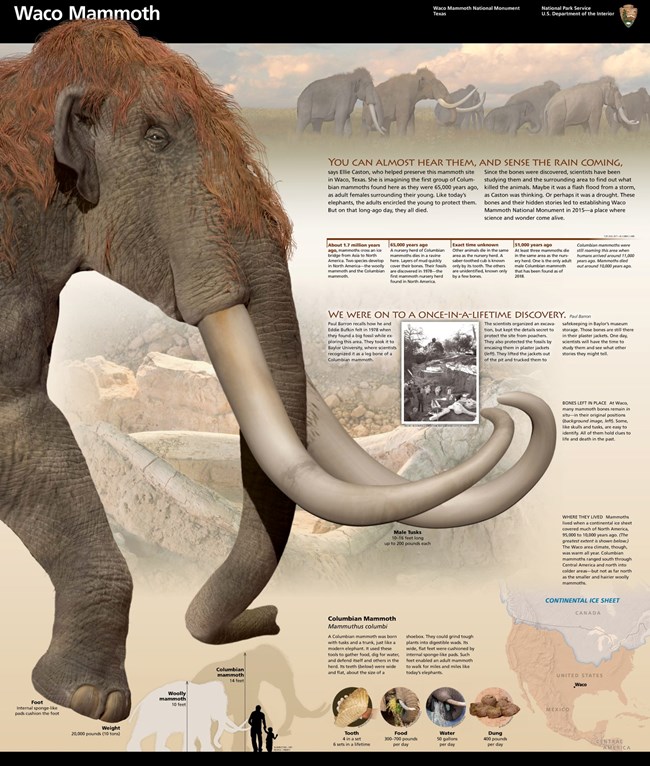Last updated: January 23, 2025
Article
NPS Geodiversity Atlas—Waco Mammoth National Monument, Texas
Geodiversity refers to the full variety of natural geologic (rocks, minerals, sediments, fossils, landforms, and physical processes) and soil resources and processes that occur in the park. A product of the Geologic Resources Inventory, the NPS Geodiversity Atlas delivers information in support of education, Geoconservation, and integrated management of living (biotic) and non-living (abiotic) components of the ecosystem.

NPS photo, 2020.
Introduction
Waco Mammoth National Monument was designated a unit of the national park system on July 10, 2015, an act that brought the National Park Service into partnership with the City of Waco, Texas, and Baylor University. The purpose of this partnership is to preserve and interpret the discovery site of an exceptionally well-preserved herd of Columbian mammoths and other Pleistocene-Epoch animals. The site’s designation as a national monument represents a culmination of nearly four decades of scientific research and community support.
The site consists of 108 acres within its authorized boundary, of which a 4.93-acre parcel around the discovery site is owned by the National Park Service. The remaining land is owned by the City of Waco. (NPS Foundation Document WACO, 2016)
Fossil Resources
The Waco site is located within the city limits of Waco, Texas, near the confluence of the Brazos and Bosque Rivers. The first mammoth fossils at the site were found in 1978 by two Waco residents, Paul Barron and Eddie Bufkin, who noticed a bone protruding from the sidewall while hiking through a ravine (now within the monument). Scientists at the Strecker Museum at Baylor University examined the bone and identified it as an upper leg bone from a Columbian mammoth (Mammuthus columbi). Subsequent excavations led by Baylor University have identified no fewer than 24 Columbian mammoth individuals, including 19 members of a nursery herd (a herd consisting of female and young mammoths) which is thought to have perished in a catastrophic natural event more than 65,000 years ago. (NPS Foundation Document WACO, 2016)
NPS image.
Mammoths in North America
Mammoths lived in North America during the Pleistocene epoch (more commonly known as the Ice Age) and are thought to have migrated across the Bering Land Bridge from northeastern Siberia approximately 1.7 million years ago. The Columbian mammoth evolved from these ancestral mammoths by the end of the middle Pleistocene, approximately 126,000 years ago. The Columbian mammoth ranged over much of North America, including most of today’s contiguous United States and reached as far south as Costa Rica. Standing more than 14 feet tall and weighing up to 20,000 pounds, the Columbian mammoth was the largest of three known mammoth species of that epoch and were larger than modern-day elephants. The Columbian mammoth and all other mammoth species in North America became extinct approximately 10,000 years ago. (NPS Foundation Document WACO, 2016)Regional Geology
Waco Mammoth site is a part of the Coastal Plain Physiographic Province and shares its geologic history and some characteristic geologic formations with a region that extends well beyond park boundaries.
-
Mead JI, Tweet JS, Santucci VL, Rasic JT, Holte SE. 2020. Proboscideans from US National Park Service lands. Eastern Paleontologist. 6:1-48.
https://irma.nps.gov/DataStore/Reference/Profile/2274060
